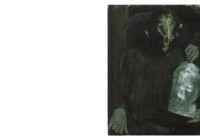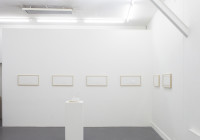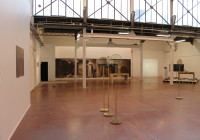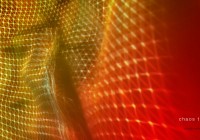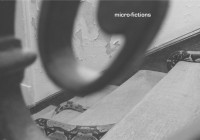“Invisible Architecture?” at les Moulins de Paillard invites contemporary artists intrigued by the collusion between art and architecture, to create works for a specific site whilst exploring a more intangible form in a fluid vision of time and space.
The works produced for this exhibition at Paillard escape closed systems. They lend themselves to chance encounters between the world’s movements and the imagination. They can be summoned at any time, moved or transported.
Imagining architecture in a dematerialized form, liquefied, disseminated or even evaporated, is not a mere show of wit. The publication “Objects on trial after the dematerialization of art” (Geneva – Métis Press 2012), emphasizes the interest of artists for the “mismatch” introduced between object and work. “The object has lost its conspicuous character” where “its materiality, subjected to challenging processes, must be reconsidered.” This theory can easily be applied to architecture. It is this spatial and temporal gap that comes into play at Paillard, at the whim of shifting body and thought, of the transformation of a place, brick and mortar, into an image that gradually loses its consistency .
“Invisible Architecture?” allows us to fully grasp the power of dematerialization in the conception of a work that now exists in many forms, presented in various platforms, interconnected and co-dependent in reference to Land Art’s site / non-site.
For Jean-Marc Poinsot, the artists of Land Art, in their developing works for galleries and in nature, bring together “…two contrasting yet complementary spatial realities;…that of the site, a place I called the anthropological site because the identity, relationships and the history of those who live there are a part of it; and that of non-site, meaning spaces of circulation, distribution and communication, where neither identity, nor relationship, nor history can be grasped and which seem specific to our contemporary period”.
From this model, the installations of “Invisible architecture?” present particularities and abstractions, recognizable and yet unknown forms. “The strangeness of what you are no longer, or no longer possess, awaits you on the path in foreign and never owned places” says Italo Calvino in Invisible Cities (1972). Through his “portraits” of cities, the writer connects ancient times – his work being inspired by Marco Polo’s Description of the World – with the future. The reader gets lost in the maze of his descriptions, but the universe of the stories of 1001 Nights is never far away.
In literature as in art, immateriality links itself to a sort of formal obsession. For Calvino, the structure of Invisible Cities takes precedence over the plot of the book. For artists seeking invisibility, rigorous protocol tends to disappear behind the phenomenological approach. They set very specific parameters (brightness, sound environment, heat, movement of air flow …) that act on the sensitivity and the viewer’s perception in order to induce a state specific to each. Space becomes a sound box or a surface of reverberation. And it is at the cost of close contact that the rumor of the architecture makes itself heard.
Alexandra Fau
Les Moulins de Paillard
http://moulinsdepaillard.wordpress.com/


